289. The Explorers set
sail from Hiva in the 25th day of
Vaitu Nui and by counting also a day zero
The expression 'within a year and a day'
may have meant that the last day in such a
year was December 30 with Sirius at the
Full Moon, and with the following day 31 belonging
as day zero in the following year - similar
to how in the night of the New Moon she was
invisible:
•
.jpg)
... Ebony label
EA 32650 from Den's tomb. The upper
right register depicts king Den twice: at
the left he is sitting in his Hebsed
pavilion, at the right he is running a
symbolic race around D-shaped markings. This
ceremony is connected to the so-called 'race
of the Apis bull'. The middle right section
reports about the raid of the city
'beautiful door' and about a daughter of Den
suffering from an unknown disease. The lower
right section reports about the visitation
of the 'souls of Peh' at the royal domain
'Wenet'. The left part of the label
describes the content of the vessel that
once belonged to the label and mentions the
high official Hemaka
[cfr
Hau Maka A Hiva], who was obviously
responsible for the delivery of the labeled
jar ...
the 25th day of
Vaitu Nui would be translated into
"April 26 at the beginning of which the
figure for the 25th day (Ga1-13) could be firmly incised in the
wooden tablet.
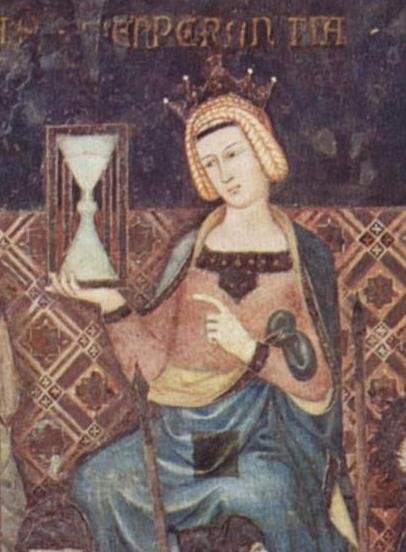
... [E:17] On the twenty-fifth day of the
first month (Vaitu Nui), Ira
and Makoi set sail; on the first day
of June ('Maro'), the bow of Ira's
canoe appeared on the distant horizon, came
closer and closer on its course, and sailed
along, and finally (one) could see the (new
home) land
...
|
APRIL 1 (91) |
2 |
3 |
4
(*14) |
 |
 |
 |
 |
|
Ga1-11 |
Ga1-12 |
Ga1-13 |
Ga1-14 |
|
HAEDUS II = η Aurigae
(75.9) |
5h (76.1)
ε Leporis (76.0),
CURSA
= β Eridani
(76.4), λ Eridani (76.7) |
μ Aurigae, μ Leporis
(77.6) |
ĸ Leporis (78.0),
RIGEL (Foot) = β Orionis
(78.1),
Flaming Star = IC405
(78.2),
CAPELLA (Mother Goat) = α
Aurigae
(78.4), ο Columbae, τ Orionis
(78.8)
THUBAN (α Draconis)
|
|
"β,
2.9, topaz yellow. Cursa,
3º to the northwest of Rigel in
Orion, is the principal star in
this constellation, seen from
the latitude of New York City.
The word is from Al Kursiyy
al Jauzah, the Chair, or
Footstool, of the Central One,
i.e. Orion, formed by β, λ, and
ψ [which evidently was omitted
in my star list] Eridani with
[Sic!] Orionis, and regarded as
the support of his left foot;
but in earlier astronomy of the
nomads it was one of Al Udhā
al Na'ām, the Ostrich's
Nest, that some extended to ο¹
and ο².
The Century Cyclopedia gives
Dhalim as an alternative title,
undoubtably from Al Thalīm, the
Ostrich; but, although used for
β by several writers, this
better belong to θ.
The Chinese called β Yuh
Tsing, the Golden Well."
(Allen) |
|
June 4 |
5 |
6 (157) |
7 (*78) |
|
°May 31 (151) |
°June 1 |
2 (*73) |
3 |
|
'May 8 (128) |
9 |
10 (*50) |
11 |
|
"April 24 (114) |
25 |
Te
Vaitu Nui 25 (E:17)
26 (*36) |
27 |

... In view of the almost
universal prevalence of the
Pleiades year throughout the
Polynesian area it is surprising
to find that in the South Island
and certain parts of the North
Island of New Zealand and in the
neighboring Chatham Islands, the
year began with the new Moon
after the early morning rising,
not of the Pleiades, but of the
star Rigel in Orion
...
|
Egyptian water
ripples |
 |
Phoenician
mēm |
 |
Greek
mu |
Μ
(μ) |
|
|
NAKSHATRA DATES: |
|
OCT 1 |
2 |
3 (*196 = *13 + *183) |
4
(277) |
|
17h (258.7)
ARRAKIS = μ Draconis
(258.7) |
Mula-19 (The Root)
SABIK (The Preceding One) = η Ophiuchi
(259.7),
η Scorpii
(259.9) |
NODUS I = ζ Draconis (260.0),
π Herculis (260.7),
RAS ALGETHI (Head of the Giant) = α Herculis
(260.8) |
SARIN = δ Herculis
(261.0), ο Ophiuchi (261.4)
ALRISHA (α Piscium)
|
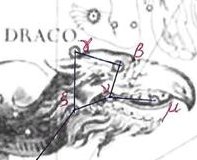 |
|
Dec 4 |
5 |
6 (*260) |
7 |
|
°Nov 30 |
°Dec 1 |
2 (*256) |
3 |
|
'Nov 7 (*231) |
8 |
9 |
10 (314) |
|
"Oct 24 (*217) |
25 |
26 |
27 (300) |

... Fanciful, assuredly,
but neither the Milky
Way nor the terrestrial
Ganges offered any basis
for the imagery of a
river flowing to the
four quarters of the
earth 'for the
purification of the
three worlds'. One
cannot get away from the
'implex' and it is now
necessary to consider
the tale of a new
skeleton map, alias
skambha: the
equinoctial colure had
shifted to a position
where it ran through
stars of Auriga and
through Rigel. Skambha,
as we have said, was the
World Tree consisting
mostly of celestial
coordinates, a kind of
wildly imaginative
armillary sphere. It all
had to shift when one
coordinate shifted
...

... The Maya word cab
means earth, world,
tierra, the place
below,
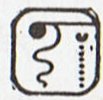
opposed to caan,
the sky. The
overwhelming evidence on
the glyph and its
associations in the
pictures and texts is
for this same meaning,
Earth. A most
interesting glyph in
this connection is one
found in Maudslay's
Tikal, plate 74, glyph
13, our form 17.33.
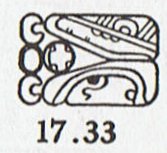
The text on the stela
shows that this glyph
indicates the passage of
one day, from 6 Eb, 0
Pop to 7 Eb, 1
Pop; the sun or
kin, preceded by the
numeral 1, is seen
entering between the
caban-sign and what
we shall later come to
identify as the
sky-glyph
...
In the beginning there
were only Sky and Earth
'in close embrace', and
when Air (like Arrakis) entered in
between them it was a
fundamental change from
2 to 3.
... The ancient Chinese
said: One generates
Two, Two generates
Three, and Three
generates Everything.
And reasonably there
should be a Sign of '3'
where this event
occurred. At left in
glyph 17.33 a triplet of
'stones' arranged
vertically could have
visualized the season
of Sky (top), the
season of Air (central)
and the season of Earth
(bottom). But since top
and bottom are quite
similar the meaning
could be the northern
sky respectively the
southern sky with the
equatorial (inhabitable)
belt in between ...
The Rigel year (*78) was
older than the year of
the Bull and an assumed
time-space difference of
*14 could have
determined why the G
text was beginning at
Hyadum II (*64).
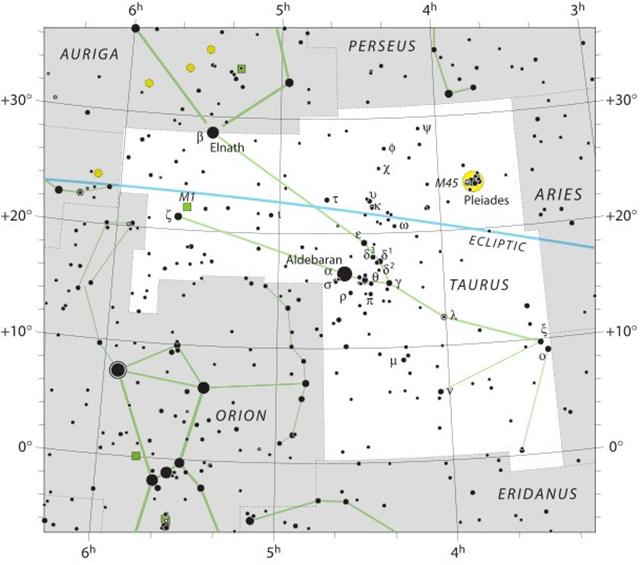
The beginning of
counting was 1, 2, 3 ...
and the glyph type which
Metoro defined as
hanau (birth etc)
was arranged both before and
after the ariki
with 3 flaming feathers
on his forehead:
|
 |
|
hanau |
|
Hanau.
1. Race, ethnic
group. Hanau
eepe, the
thick-set race;
hanau momoko,
the slender race
(these terms
were
mistranslated as
'long-ears' and
'short-ears').
2. To be born.
Hanau tama,
pregnant woman;
vî'e hanau
poki,
midwive (also:
vî'e hakaa'u).
Vanaga. To
be born; vie
hanau,
midwife. P Pau.:
fanauga,
child,
descendant,
progeny. Mgv.:
hanau, to
be born, to be
brought into the
world. Mq.:
fanau,
hanau, to be
born, to lie in,
to bring into
the world. Ta.:
fanau, to
be born, to lie
in. Churchill. |
The Explorers sighted 3
islets ahead, outside
the southwestern corner
of the mainland, in the
first day of Te Maro,
and interpreting ihe
tau in Ga2-20
|
 |
 |
|
ihe tau |
Te Maro 1 (*72) |
as the glyph for this
day it becomes
understandable why
Manuscript E described
it with words referring
to
the (pointed) bow of
their canoe:
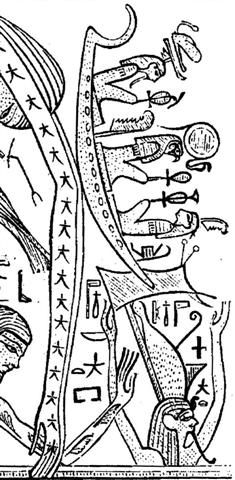
|
MAY 8 |
9 |
10 (130) |
11 |
12 |
13 (*53) |
 |
 |
 |
 |
 |
 |
|
Ga2-18 |
(50)
Ga2-19 |
Ga2-20 (50) |
Ga2-21 |
Ga2-22 |
Ga2-23 |
|
Eskimo Nebula =
NGC2392 Gemini
(112.2)
ANTARES (α
Scorpii)
|
Al Dhirā'-5
(The Forearm)/
Punarvasu-7
(Doublegood
Pair) /
Mash-mashu-Mahrū-10
(Western One of
the Twins)
CASTOR
= α Gemini
(113.4) |
ANA-TAHUA-VAHINE-O-TOA-TE-MANAVA-7
(Pillar for
elocution)
υ Gemini
(114.0),
MARKAB PUPPIS =
κ Puppis
(114.7), ο
Gemini (114.8),
PROCYON = α
Canis Minoris
(114.9) |
α Monocerotis
(115.4), σ
Gemini (115.7) |
Mash-mashu-arkū-11
(Eastern One of
the Twins)
κ Gemini
(116.1),
POLLUX
= β Gemini
(116.2), π
Gemini (116.9) |
AZMIDISKE = ξ
Puppis
(117.4) |
|
July 11 |
12 (193) |
13 (*114) |
14 |
15 |
16 |
|
°July 7 |
8 |
9 |
10 |
11 (*112) |
12 (193) |
|
'June 14 |
15 |
16 |
17 (168) |
18 |
19 (*90) |
|
"May 31 (151) |
"June 1 |
Te
Maro 1 (*72) |
3 (154) |
4 |
5 |
|
NAKSHATRA DATES: |
|
NOV 7 |
8 |
9 |
10 (314) |
11 |
12 (*236) |
|
ν Aquilae (Ant.)
(295.0),
ALBIREO
(Ab Ireo) = β
Cygni
(295.5) |
ALSAFI
(Fire Tripod) = σ
Draconis
(296.0), μ
Aquilae (296.3),
ι Aquilae (Ant.)
(296.8),
κ Aquilae (Ant.)
(296.9) |
ε Sagittae
(297.1), σ
Aquilae (Ant.)
(297.4),
SHAM
(Arrow)
= α Sagittae
(297.8) |
β Sagittae
(298.0), χ
Aquilae (298.3),
ψ Aquilae
(298.8) |
υ Aquilae
(299.1),
TARAZED
(Starstriking
Falcon) = γ
Aquilae
(299.3), δ
Sagittae
(299.6), π
Aquilae (299.9) |
Sravana-23
TYL = ε Draconis
(300.0), ζ
Sagittae
(300.1),
ALTAIR
(Flying Eagle)
= α Aquilae
(300.3), ο
Aquilae (300.5),
BEZEK = η
Aquilae (Ant.)
(300.8) |
|
Jan 10 |
11 |
12 |
13 (378) |
14 |
15 (*300) |
|
°Jan 6 |
7 (372) |
8 |
9 |
10 (*295) |
11 |
|
'Dec 14 |
15 |
16 (350) |
17 |
18 |
19 (*273) |
|
"Nov 30 |
"Dec 1 |
2 (336) |
3 |
4 |
5 (*259) |
|
Ihe.
A
fish. Vanaga.
1. Mgv.: ihe,
a fish. Mq.:
ihe, id.
Sa.: ise,
id. Ma.: ihe,
the garfish. 2.
Ta.: ihe,
a lance. Ha.:
ihe, a
spear.
Churchill.

... The garfish
(Belone
belone) is a
pelagic,
oceanodromous
needlefish found
in brackish and
marine waters of
the Eastern
Atlantic, the
Mediterranean
Sea, the Baltic
Sea, etc. The
fish lives close
to the surface
and has a
migratory
pattern similar
to that of the
mackerel. They
feed on small
fish and leap
out of the water
when hooked. The
garfish are
oviparous and
the eggs are
often found
attached to
objects in the
water by
tendrils on the
egg's surface.
Garfish have
unusually green
bones which
discourages many
people from
eating them.
Many consider
garfish to be
delicious fried,
baked or
barbecued. Its
pelvic fins are
located in a
posterior
position as are
its dorsal and
anal fins. They
are positioned
for posterior
flexing of the
body ... |
|
Tau.
Year (ta'u),
he-hoa ite
ta'u, to
confess to a
crime committed
long ago, by
publishing it in
the form of a
kohau motu mo
rogorogo (rongorongo
tablet). Vanaga.
1.To hang (tau),
to perch (said
of chickens on
tree branches at
night); rock on
the coast,
taller than
others so that
something can be
deposited on it
without fear of
seeing it washed
away by the
waves;
hakarere i ruga
i te tau, to
place something
on such a rock;
tau kupega,
rope from
which is hung
the oval net
used in ature
fishing. 2.
Pretty, lovely;
ka-tau!
how pretty!
Vanaga. 1. Year,
season, epoch,
age. P Pau.:
tau, a
season, period.
Mgv.: tau,
a year, the
season of
breadfruit. Mq.:
tau,
year. Ta.:
tau, season,
time. 2. Fit,
worthy,
deserving,
opportune;
tae tau,
impolite,
ill-bred,
unseemly; pei
ra tau,
system. PS Mgv.:
tau, fit,
suitable,
proper. Sa.:
tau, right,
proper. To.:
tau,
becoming, fit,
proper,
agreeable. Fu.:
tau, fit,
proper. 3. To
perch. P Pau.:
tau, a
perch for a
bird. Mgv.:
tau, to
mount on a
person's back.
Mq.: tau,
to perch, to
rest on. Ta.:
tau, to
perch, to alight
on. 4. To hang;
hakatau,
necklace;
hakatautau,
to append. P
Pau.:
fakatautau,
to hang up. Mq.:
tautau,
id. Ta.:
faatautau,
id. 5. Anchor;
kona tau,
anchorage, port.
P Mq.: katau,
anchor. Ta.:
tau, id. 6.
To fight;
hakatau,
challenge, to
defy, to incite;
hakatautau,
to rival. P Ma.:
whakatatau,
to quarrel.
Churchill. Pau.:
fakatau,
indolent. Ta.:
faatau,
id.
Fakatautau,
to delay, to
defer. Ta.:
haatautau,
id. Churchill.
The Malay word
for 'year' is
taun or
tahun. In
all Polynesian
dialects the
primary sense is
'a season', 'a
period of time'.
In the Samoan
group tau
or tausanga,
besides the
primary sense of
season, has the
definite meaning
of 'a period of
six months', and
conventionally
that of 'a
year', as on the
island of Tonga.
Here the word
has the further
sense of 'the
produce of the
year', and
derivatively 'a
year'. In the
Society group it
simply means
'season'. In the
Hawaiian group,
when not applied
to the summer
season, the word
keeps its
original sense
of 'an
indefinite
period of time',
'a life-time, an
age', and is
never applied to
the year: its
duration may be
more or less
than a year,
according to
circumstances.
So far our
authority
(Fornander, I,
124; cp. 119).
It seems however
to be
questionable
whether the
original sense
is not the
concrete
'produce of the
seasons', rather
than the
abstract 'period
of time'. It is
significant that
on the Society
Islands the
bread-fruit
season is called
te tau,
and the names of
the other two
seasons, te
tau miti rahi
and te tau
poai, are
formed by adding
to this name.
Nilsson. |
|
Kau,
v. Haw., to
hang up,
suspend, to tie
or gird on, to
put or place a
thing, to fall
upon, to put on,
as a burden, to
set or fix, as
boundaries of a
land, or a
decree, to
promulgate, as a
law; in a neuter
sense, to light
down, as a bird,
as a spiritual
influence;
adj. a
setting of the
sun, a resting,
a roost for
fowls; kau-a,
to hesitate, be
in doubt,
suspense, to beg
off; kau-o,
to draw, as a
load; morally,
to endure, to
incline to, to
pray for some
special
blessing;
kau-oha, a
dying charge,
bequest,
covenant,
commission,
command;
kau-kai, to
wait for an
event, to
expect;
kau-kau, to
take counsel, to
resolve, to
chide, to
reprove, to
explain, make
clear; kau-la,
a rope, cord,
tendon, a
prophet, a seer;
kau-la-i,
to hang up, put
up in the sun;
kau-lana,
fame, report,
renown;
ma-kau, be
ready, prepared;
akau, the
right hand
(dexter), to be
right, to the
north, north. In
the Southern
dialects we
find: Tong.,
tau, to
hang, overhang,
impend, extend
to, fit, be
suitable;
ma-tau, the
right hand;
ta-tau,
equal, like
(balanced);
tau-la, a
cable;
tau-ranga,
an anchoring
place. Sam.,
tau, to rest
on, light on,
fall on;
faa-ta-tau,
to compare;
tau, what is
proper and
right;
tau-au, to
tend towards,
either decline
or increase;
tau-me,
stretch up the
hand and not
reach, to desire
and not obtain;
tau-i,
reward, payment,
revenge;
tau-la, an
anchor, to
anchor, the
priest of a god;
tau-la-i,
to hang up to; tau-langa,
a sacred
offering, an
anchorage;
tau-lalo,
let the hands
drop in
fighting, be
conquered;
tau-tau, to
hang, hang up;
ma-tau,
right-hand side,
an axe;
faa-tau,
equally, alike;
v. to buy,
barter, sell;
faa-tau-oa,
a merchant.
Marqu., tau,
to carry on the
back; tau-tau,
suspended, hung
up; ta-tau,
to count,
reckon; tau-a,
a rope, a
priest; a-tau,
ka-tau,
an anchor. N.
Zeal., tau,
besided previous
meanings, to
meet; ma-tau,
expert,
dexterous,
shrewd. Tah.,
tau, to hang
upon, an anchor;
tau-ai,
to hang up,
spread out, as
clothes to dry;
tau-i,
price, cost, to
exchange, buy;
tau-ra,
cord, a troop,
crowd, be
inspired, a
prophet;
tau-e, a
swing, see-saw;
tau-piri,
tail for a kite;
tau-mata,
a visor, a mask;
tau-mi, a
breastplate,
plastron;
a-tau, right
hand, to the
right. Fiji.,
tau, to
fall, as of
rain, to fall
upon; tau-ca,
to place or put
down a thing;
tau-nga, a
swinging shelf.
Malg.,
mang-hatau,
mana-tao,
to place, put.
(Fornander) |
|
Kao.
1. Side, edge,
rim; kao gutu
(or just
kao), labia
minora. 2.
Steep, almost
perpendicular;
thin, skinny.
Motu Kaokao,
name of one of
the islets
opposite
Orongo, with
a steep shape.
Vanaga. Cloth,
clothing, garb.
(Perhaps a
variant of
kahu.)
Kaokao,
side, flank,
ribs, lateral. P
Pau.: kaokao,
the side, flank.
Mgv.: kaokao,
the side, flank.
Mq.: kaokao,
id. Ta.: aoáo,
id. In Nuclear
Polynesia this
is
particularized,
in Samoa to the
armpit, in Tonga
and Futuna to
the sides of the
canoe. Therefore
it may be
considered a
borrowing from
the Tongafiti.
Churchill. |

|
.jpg)


















